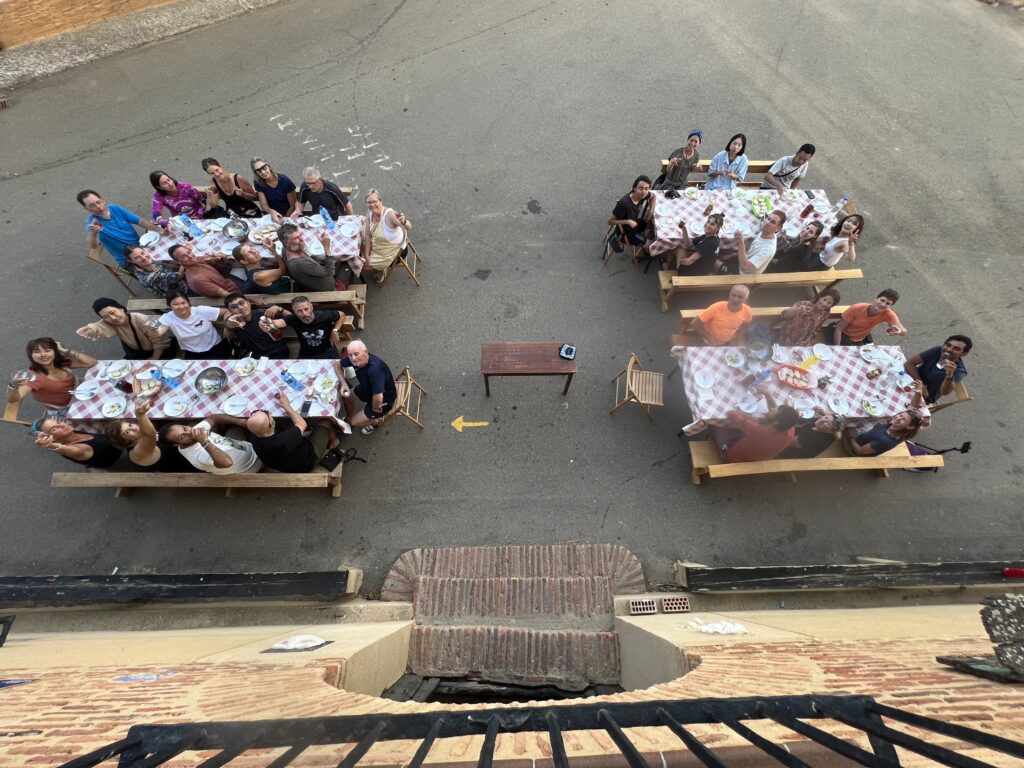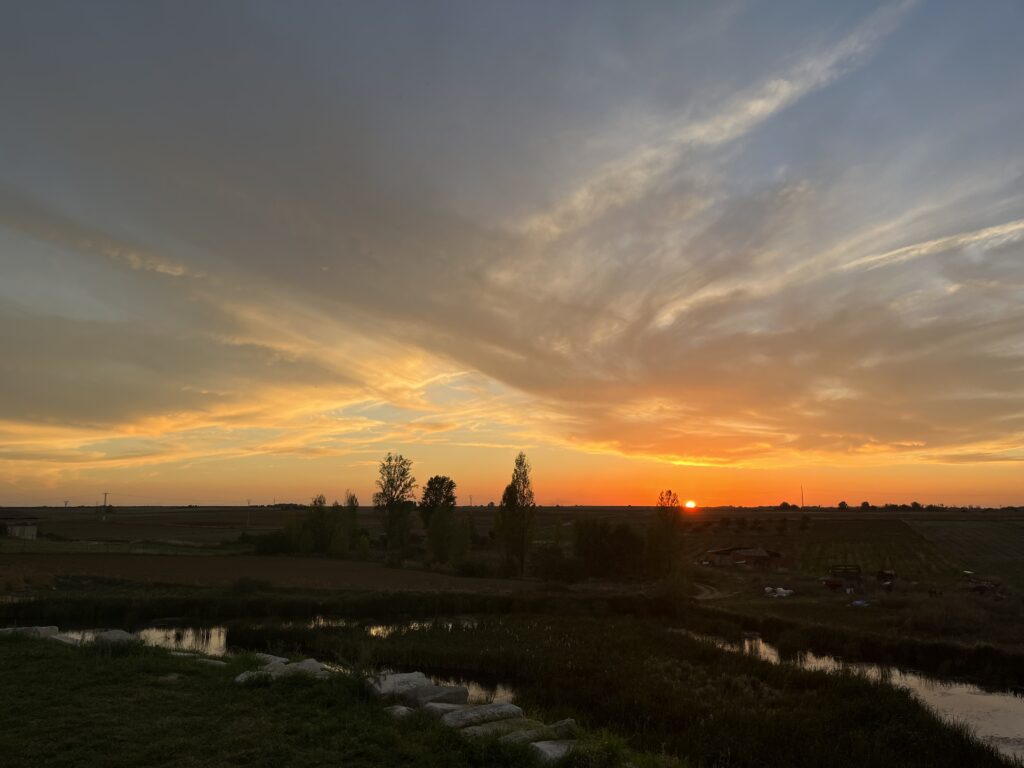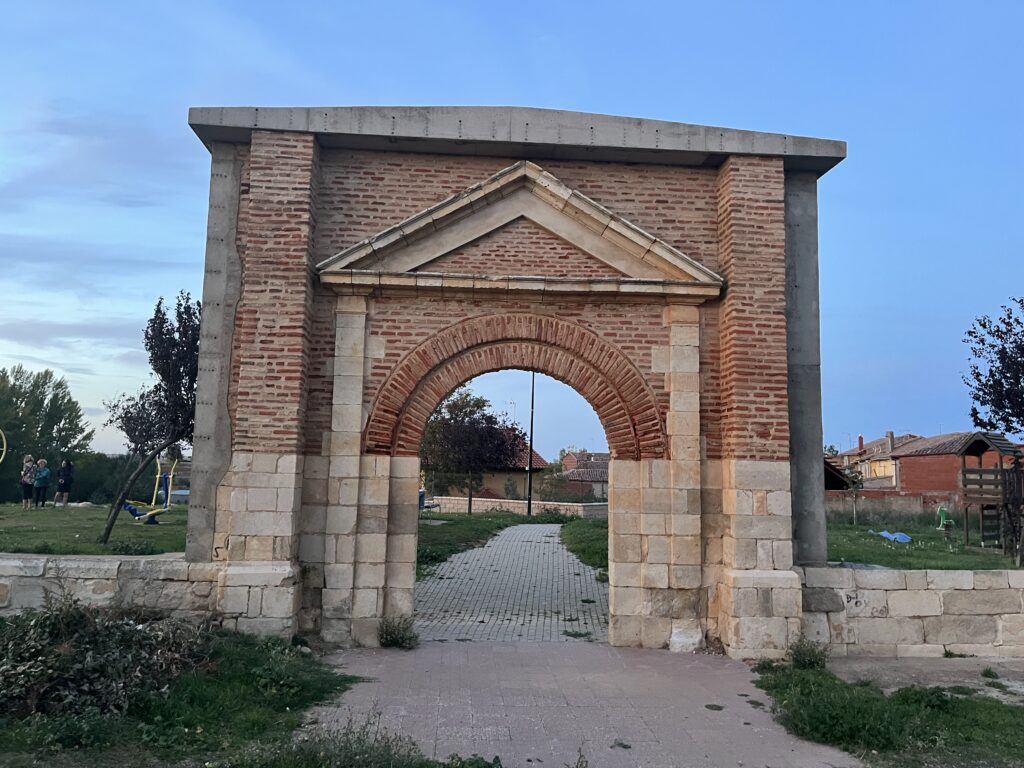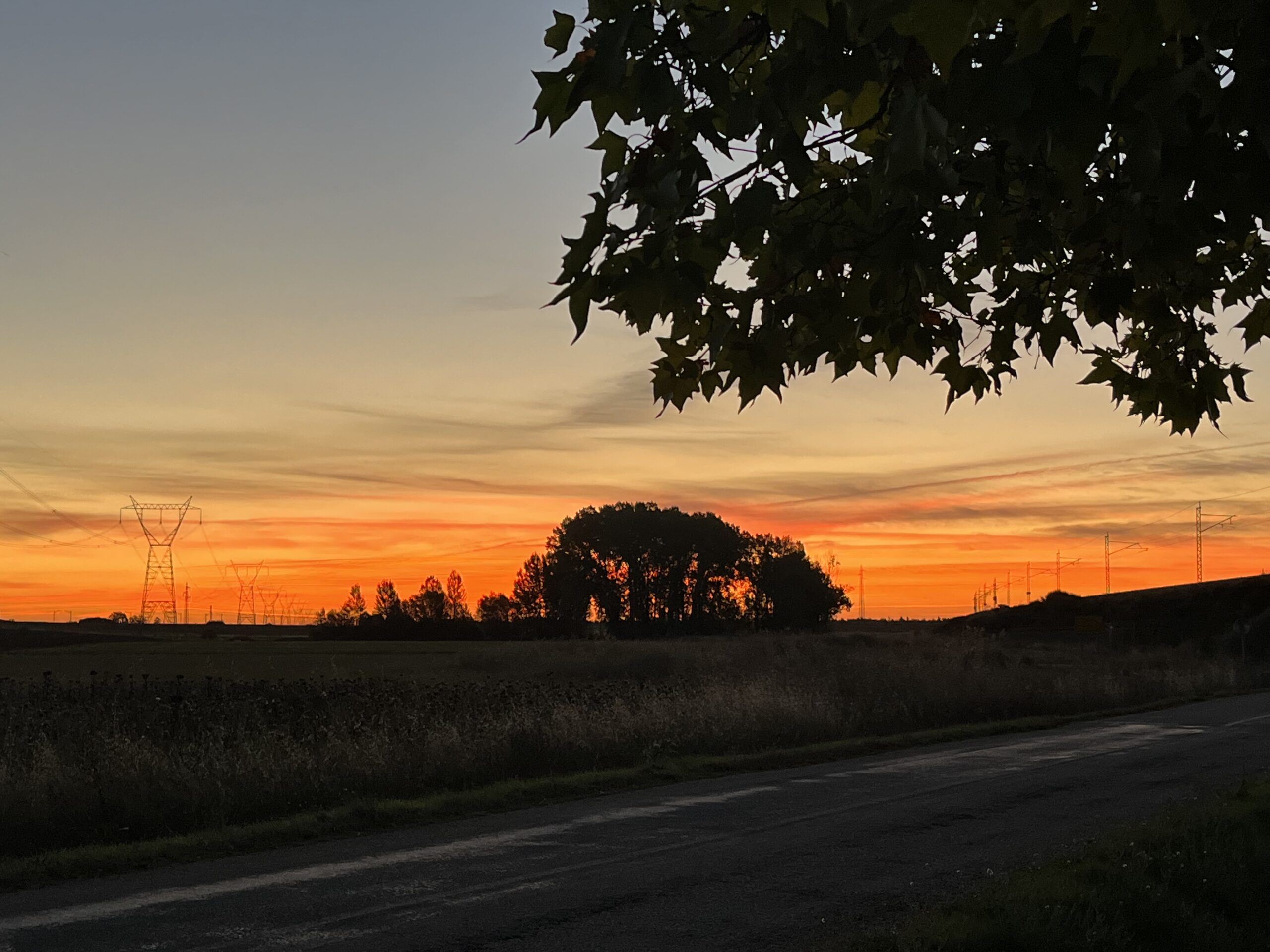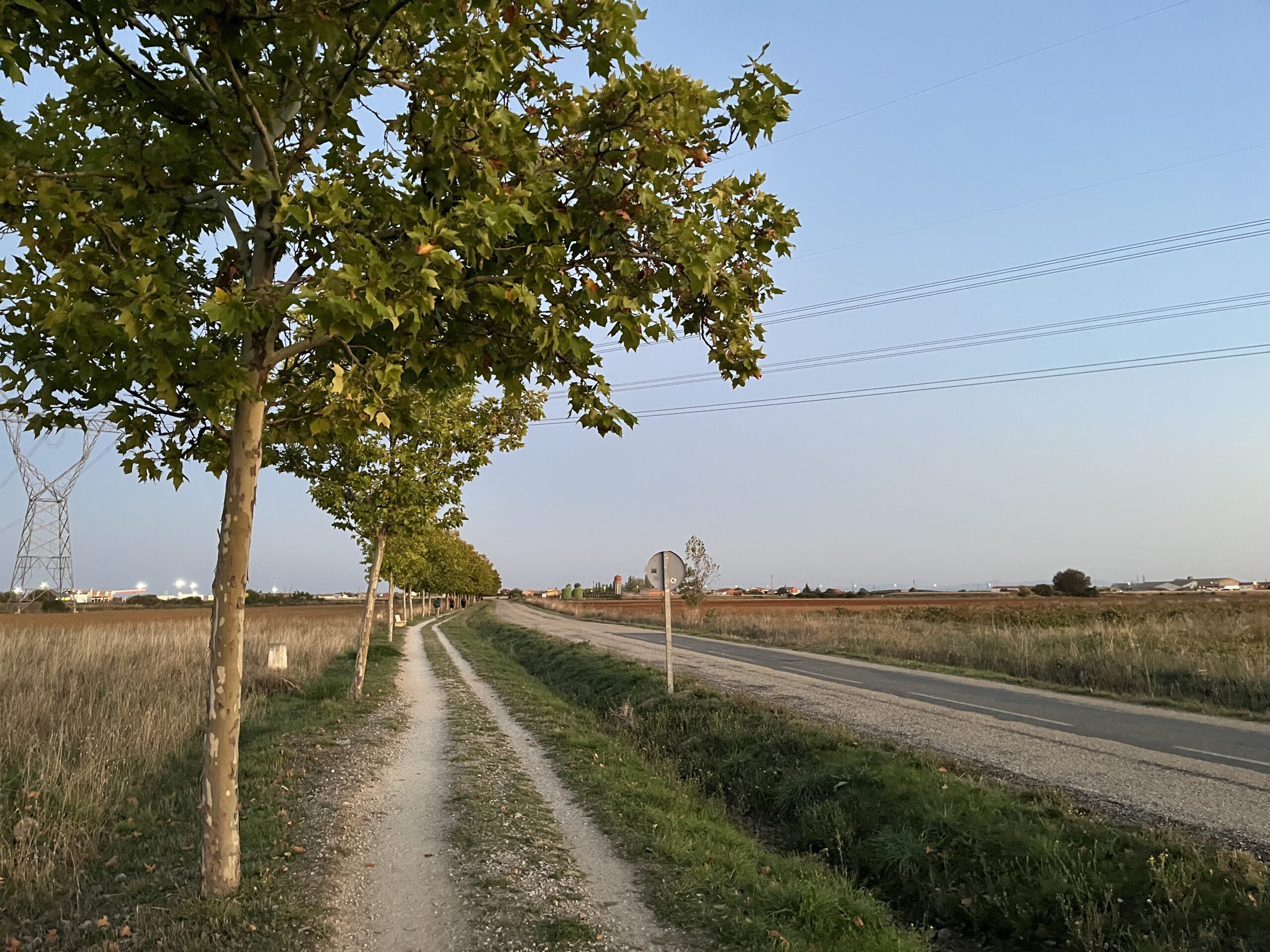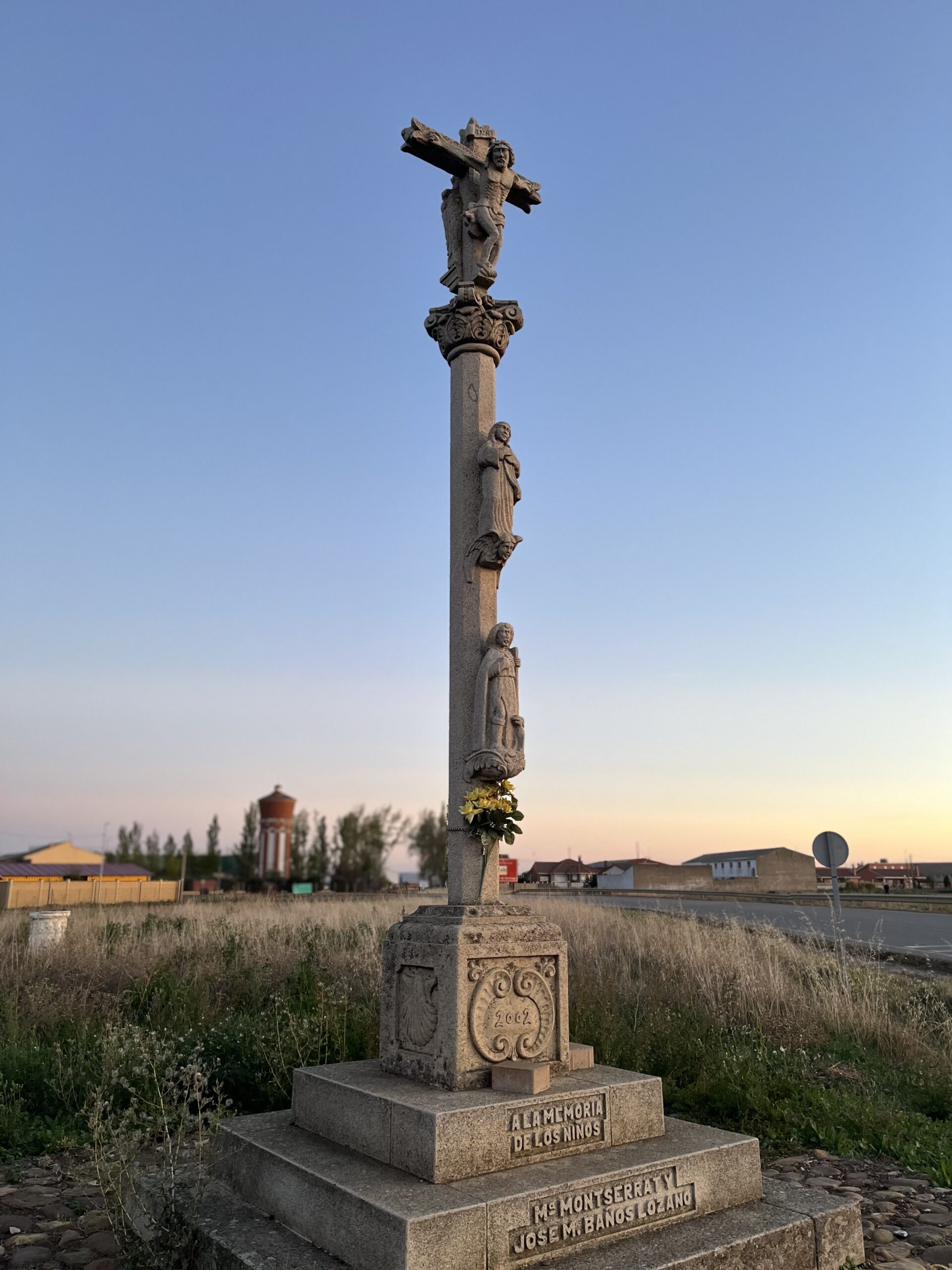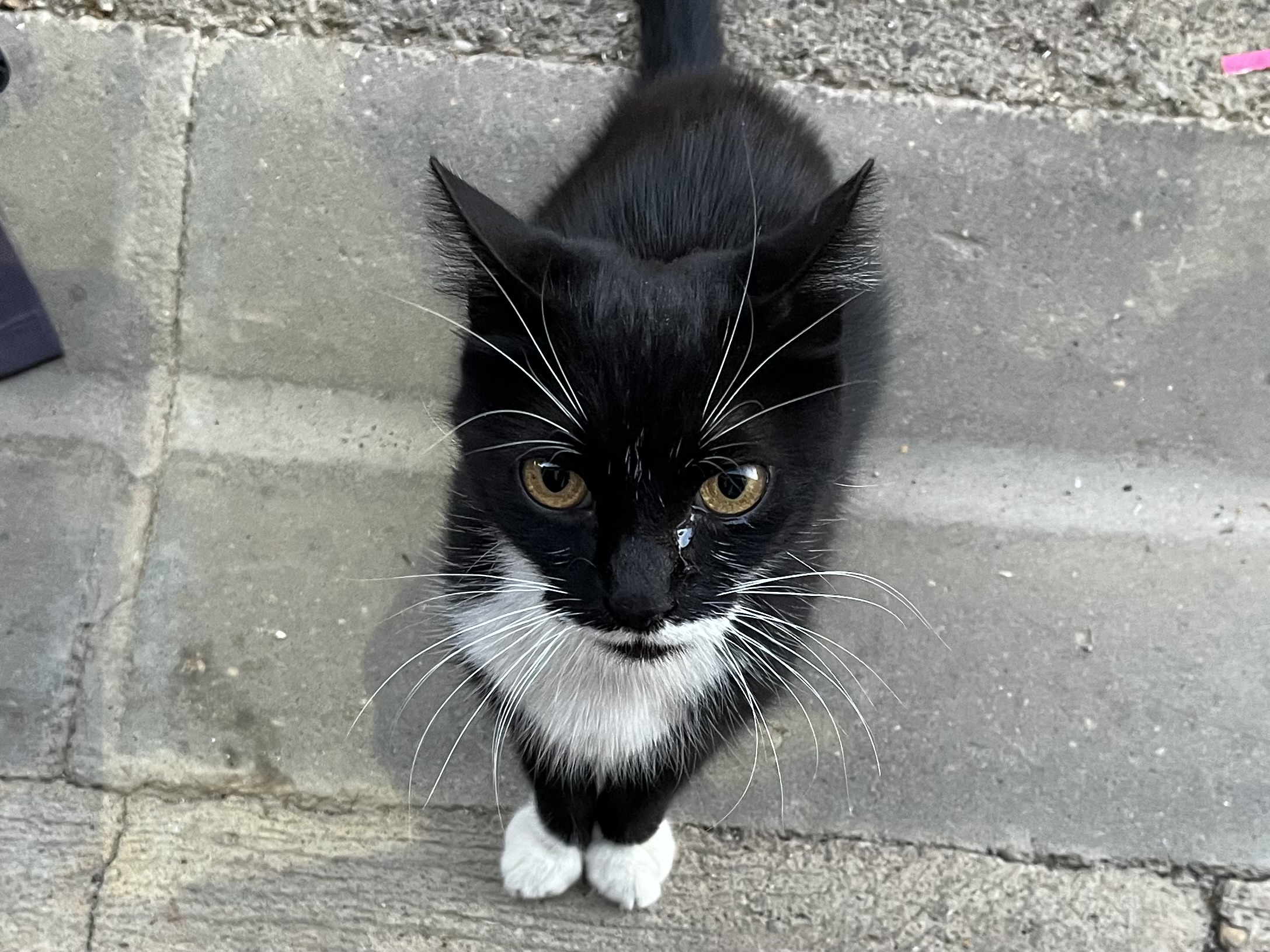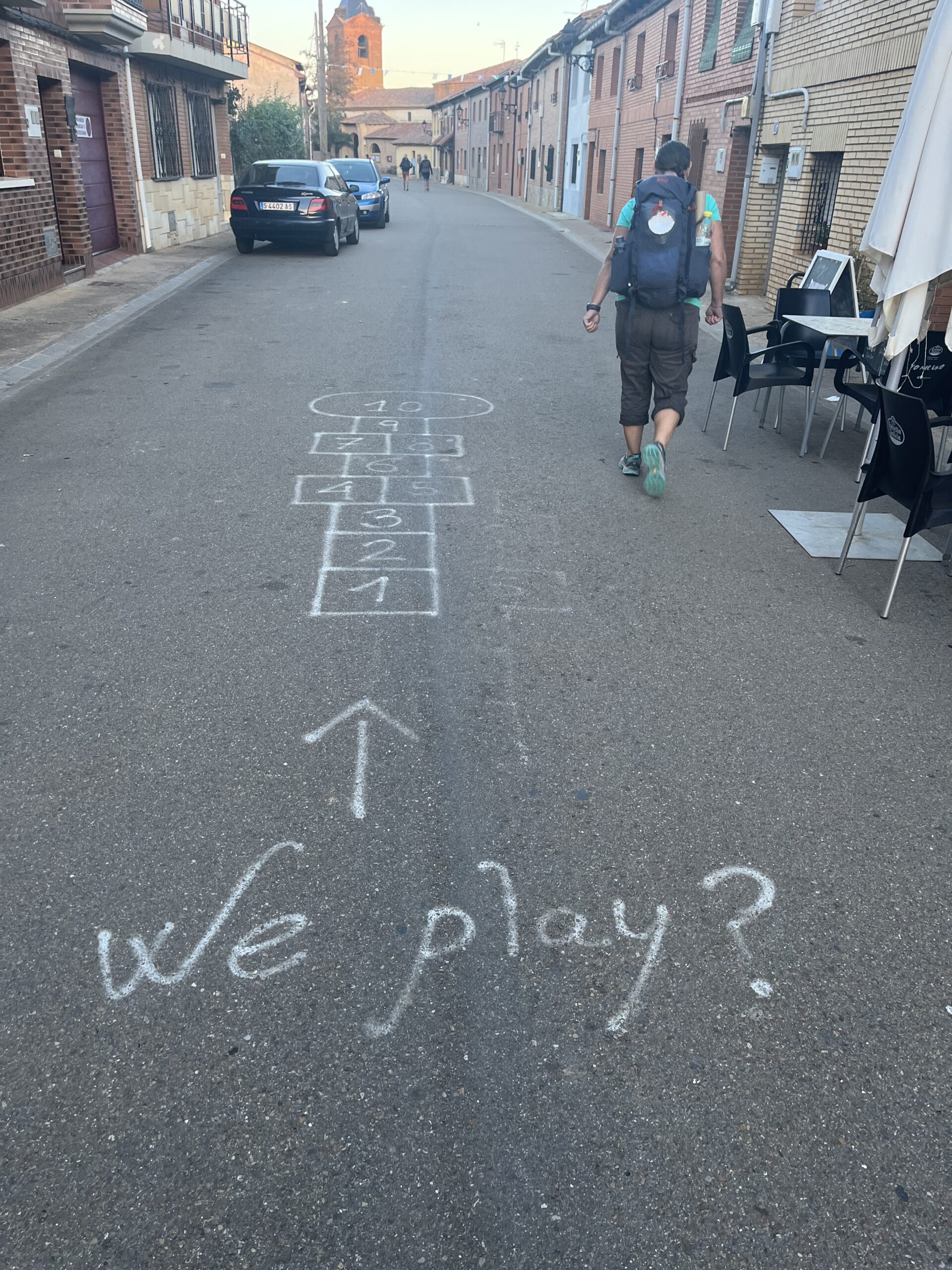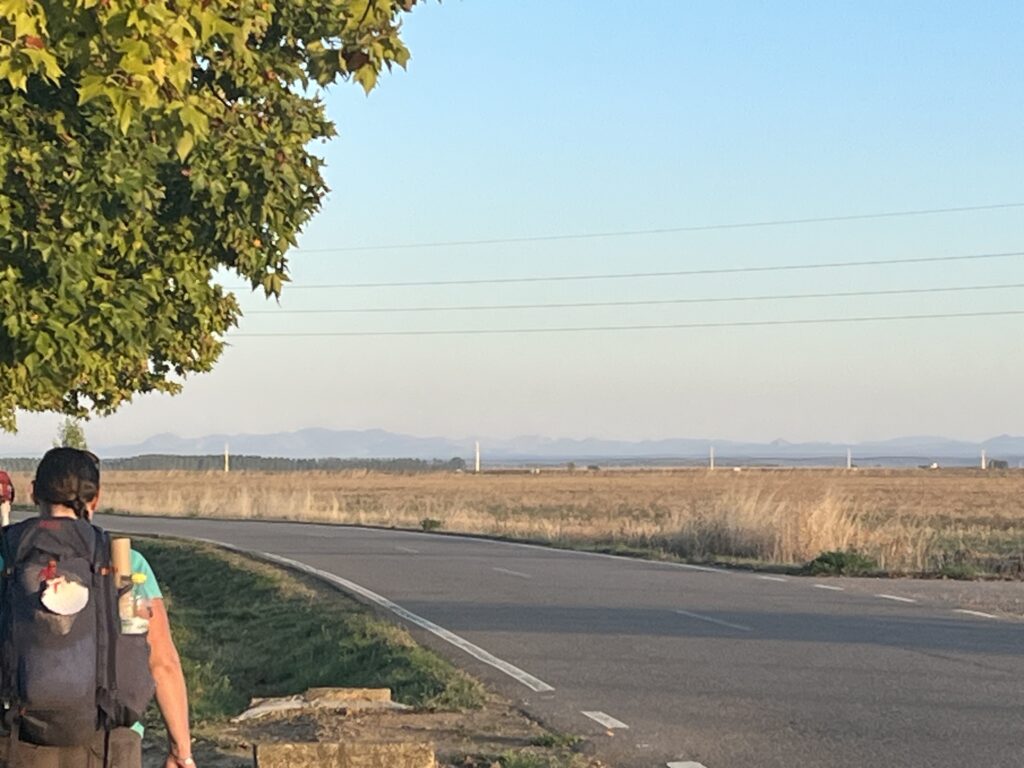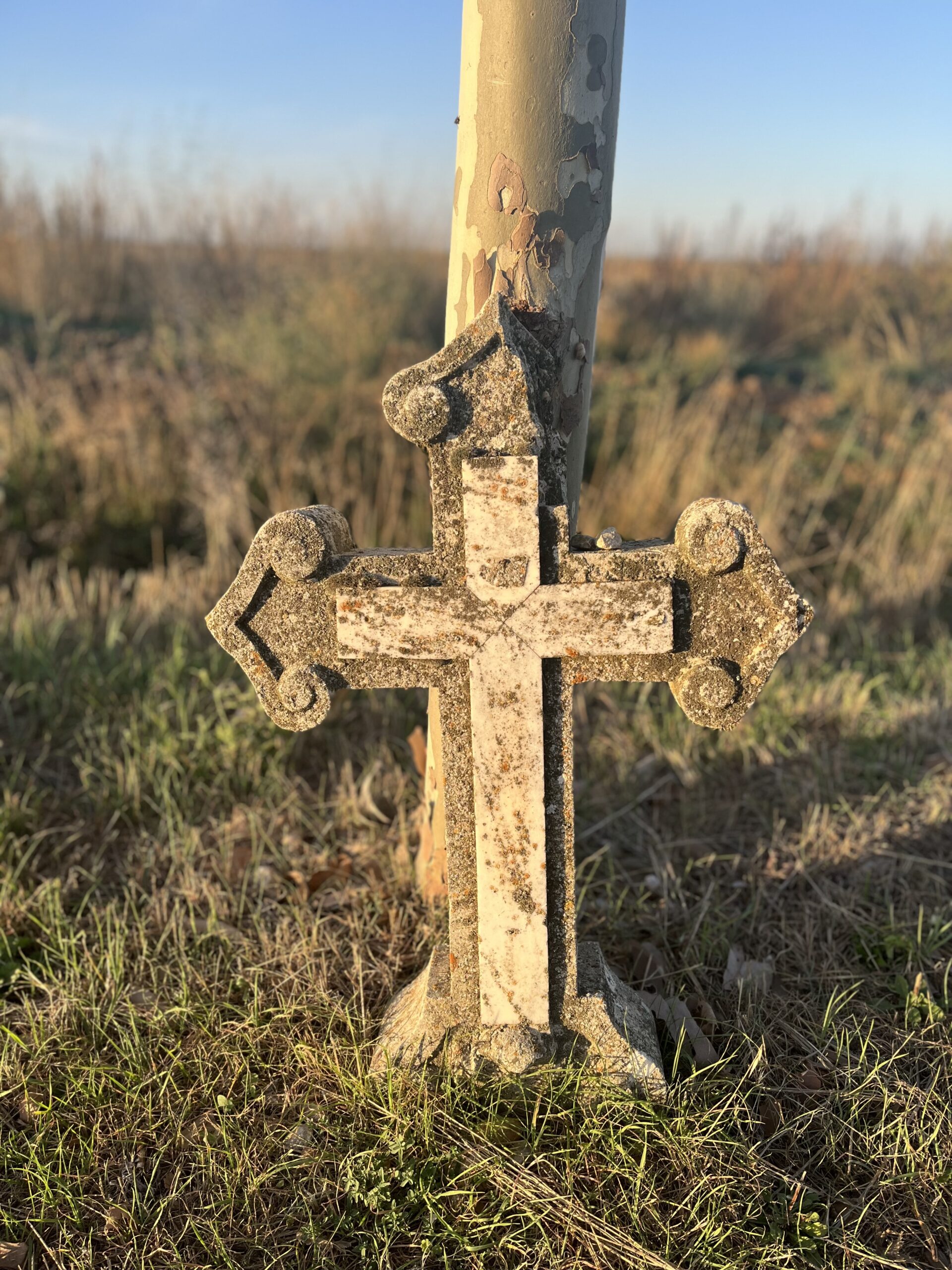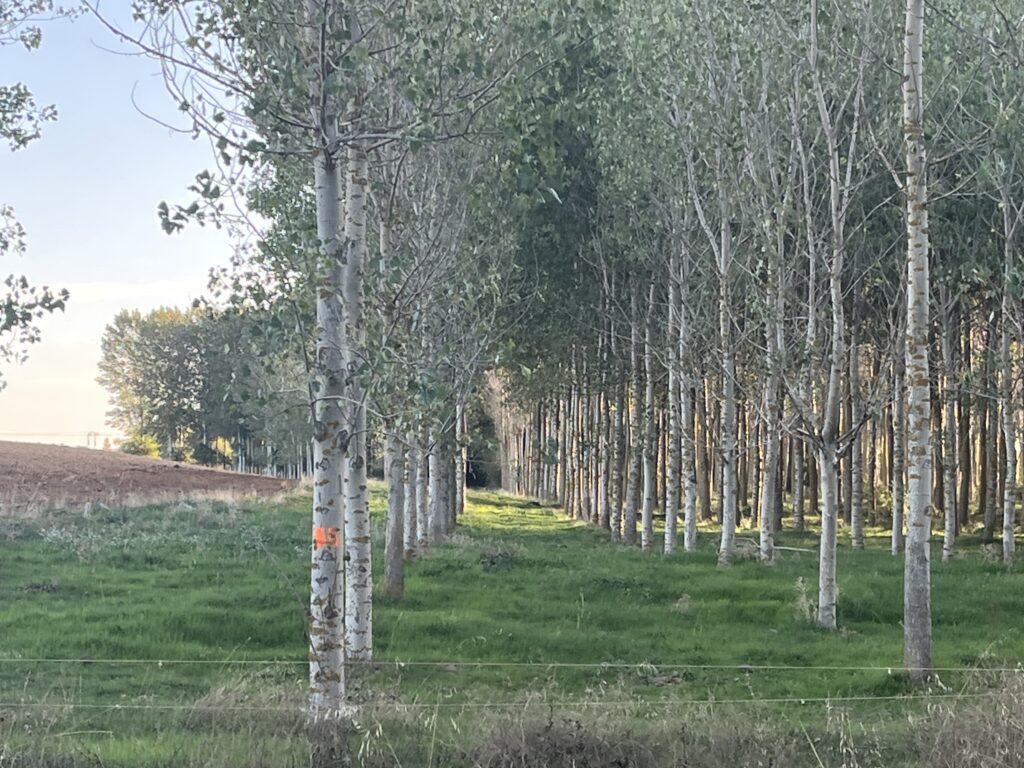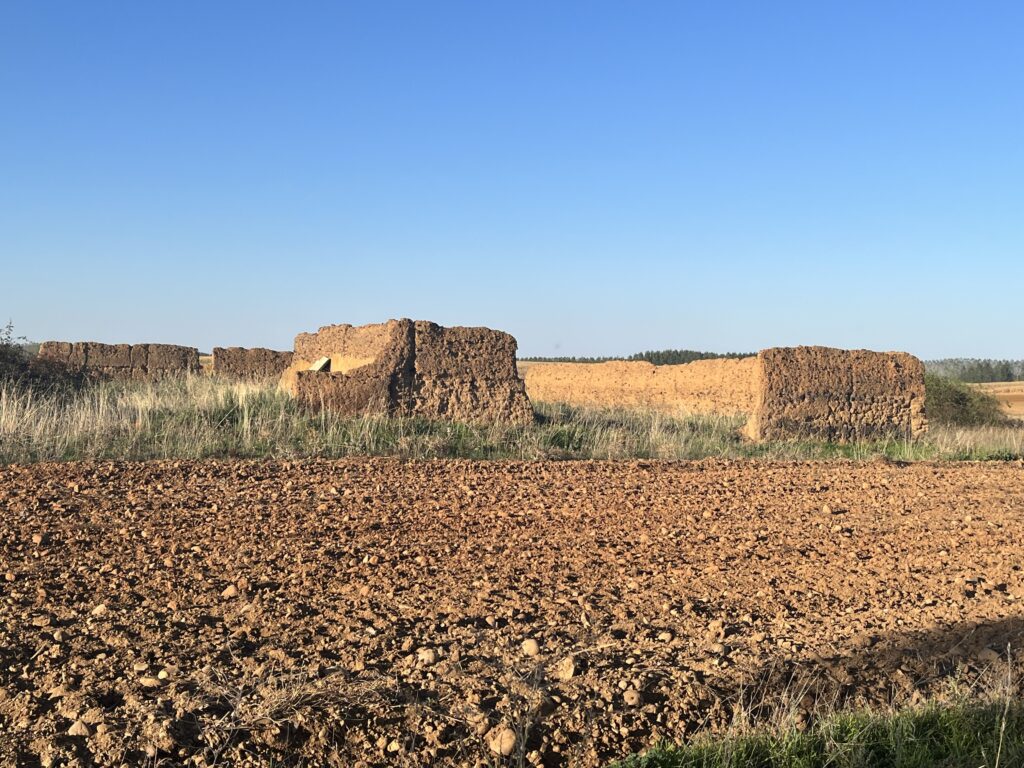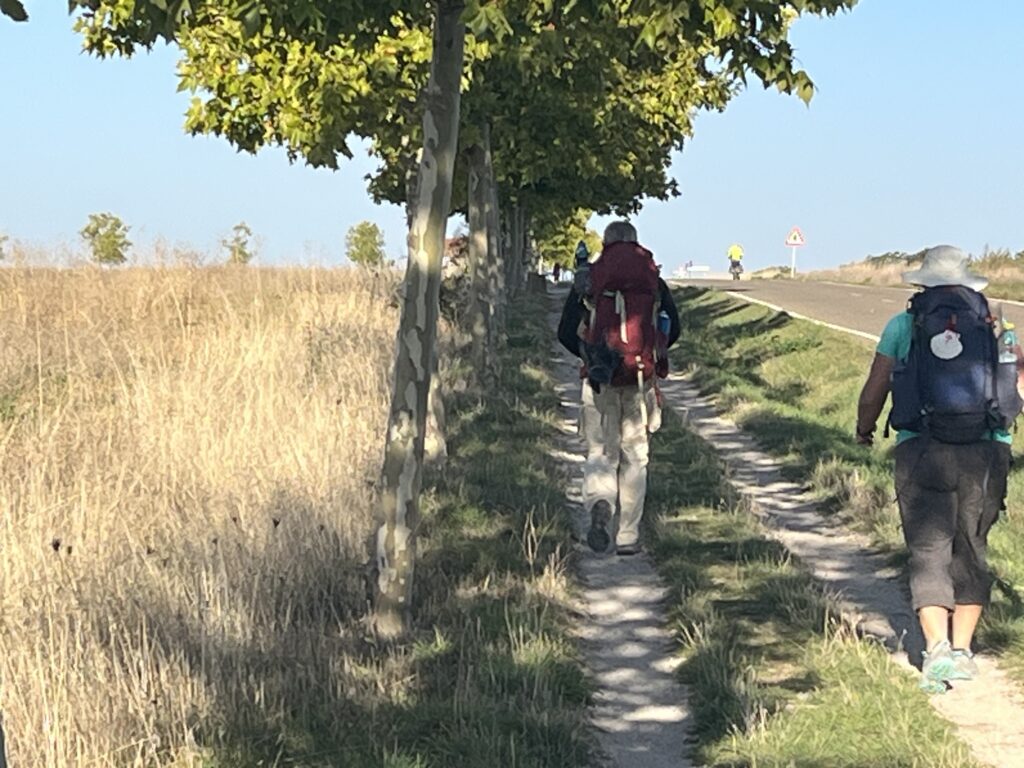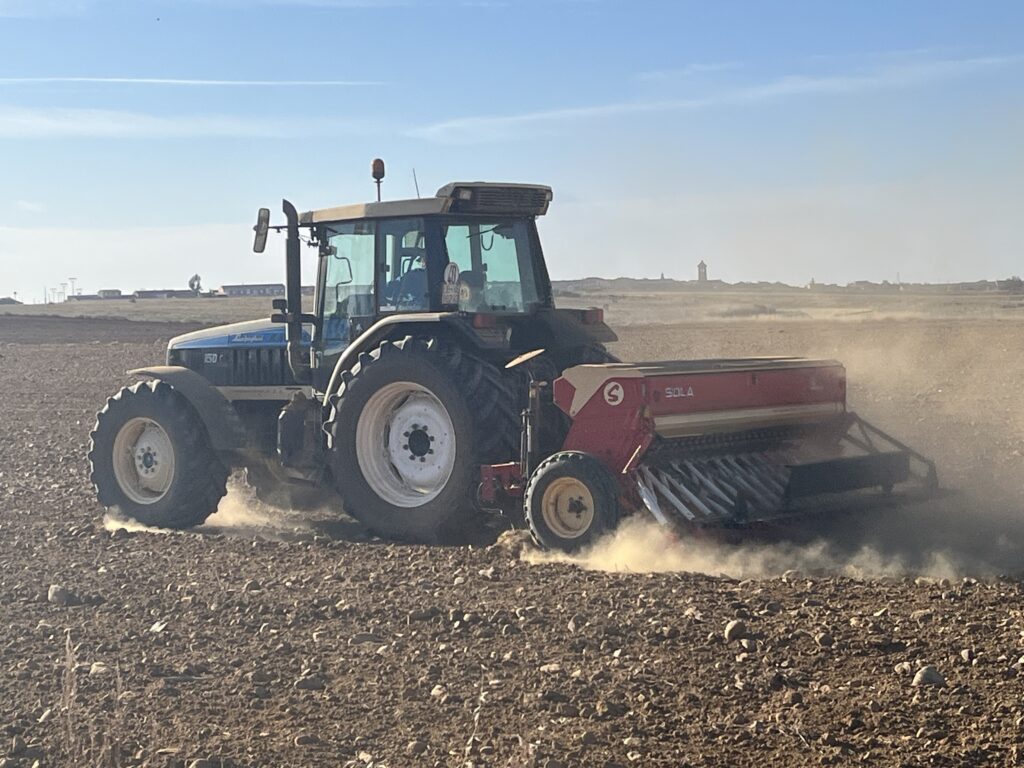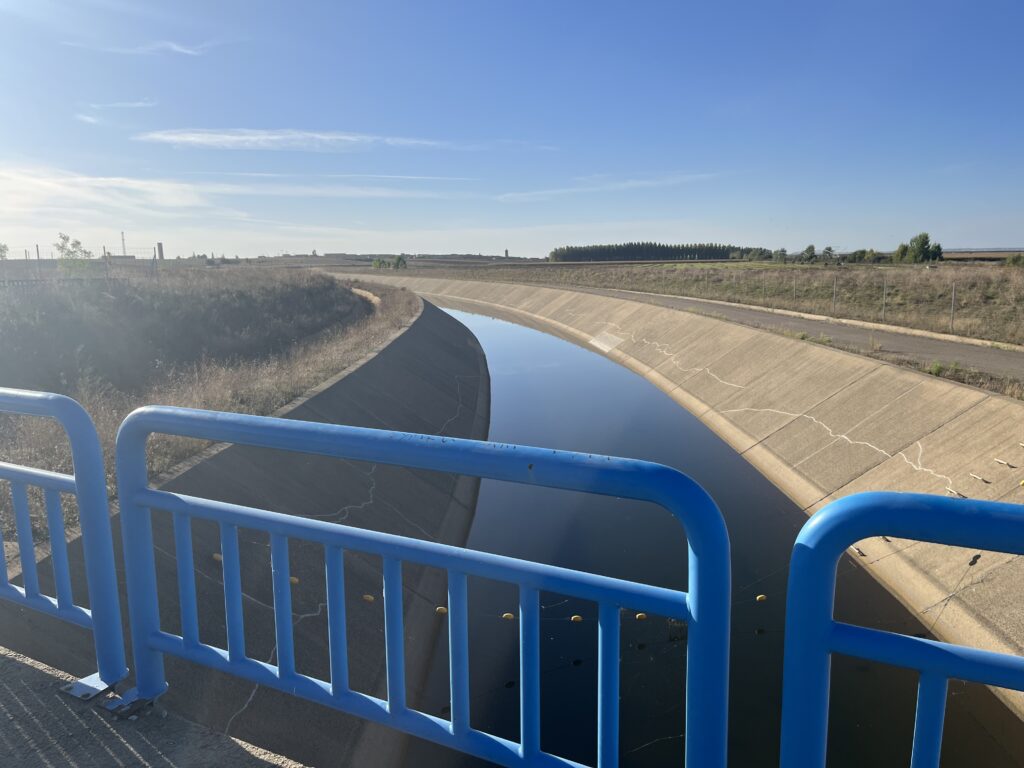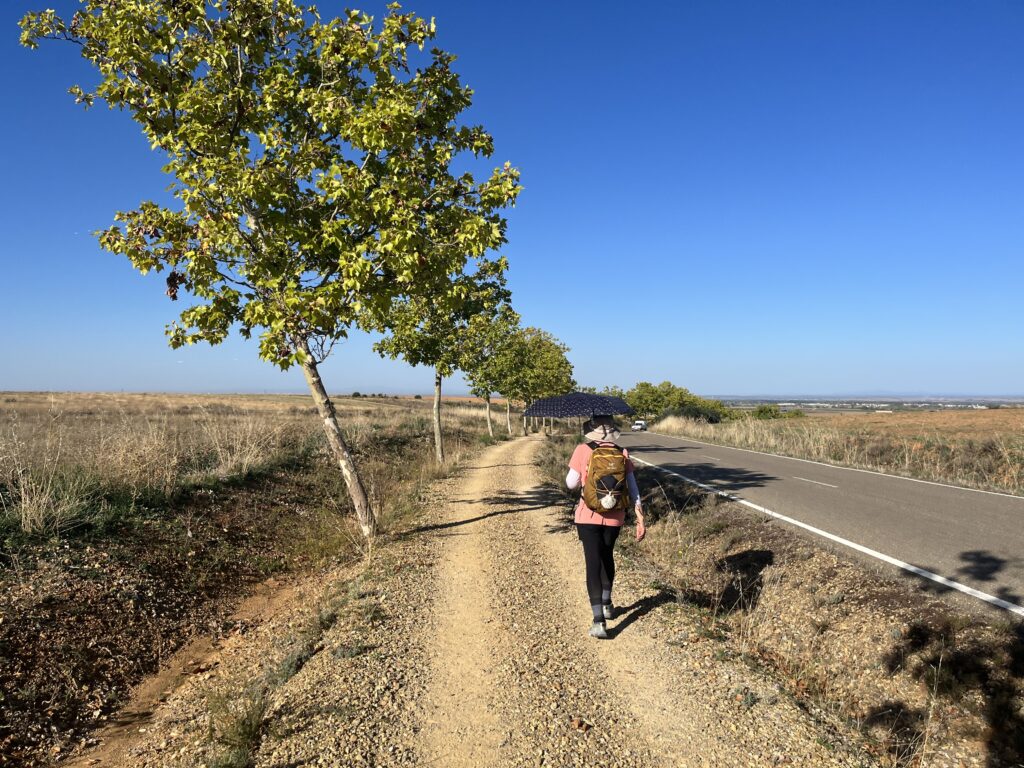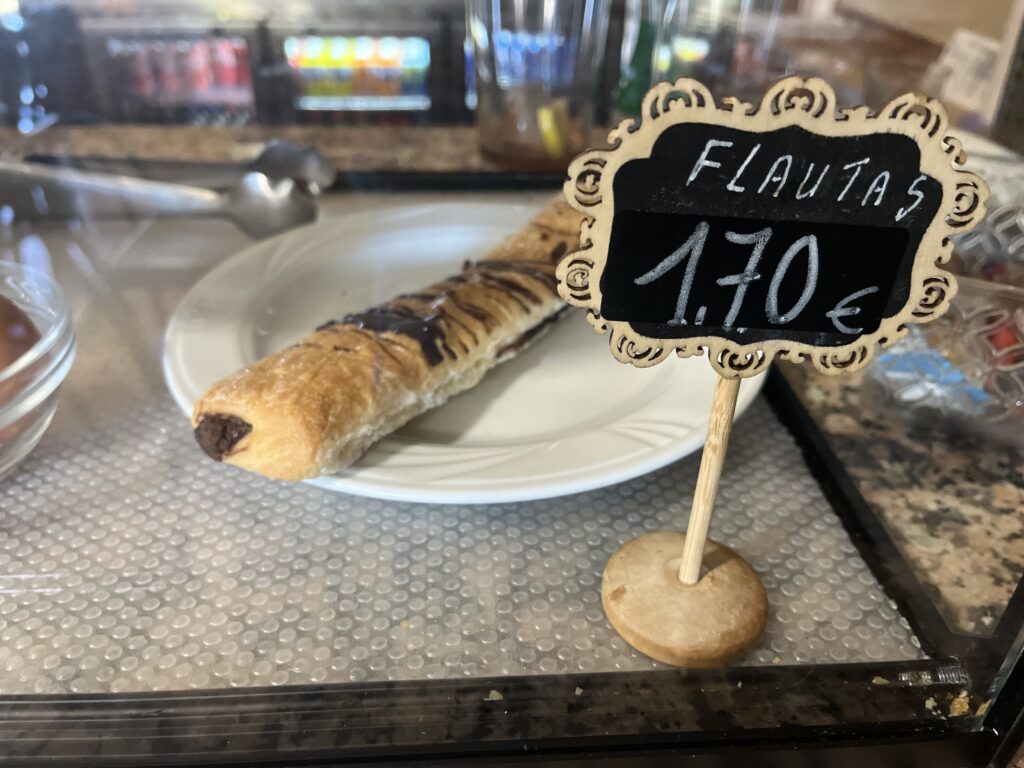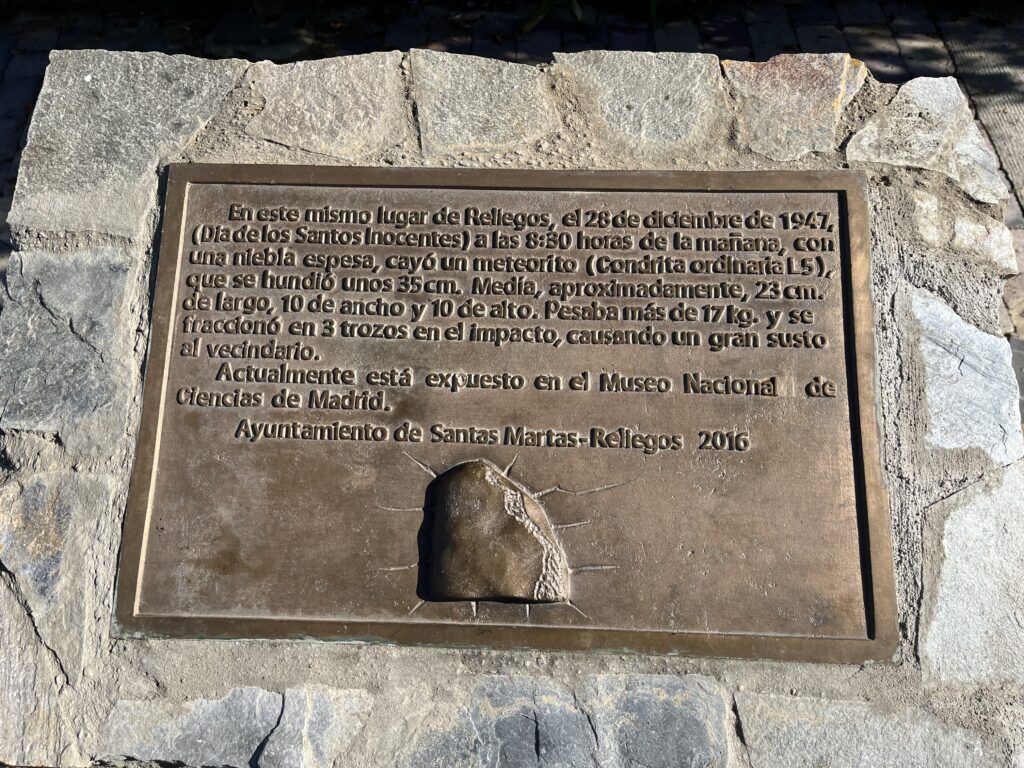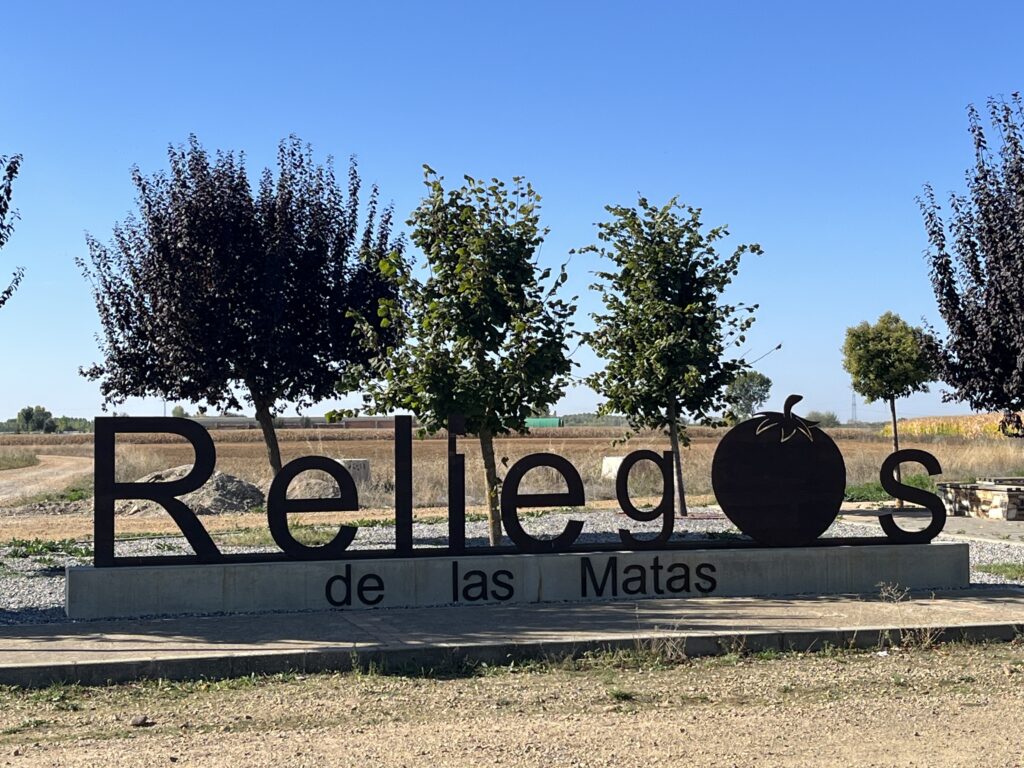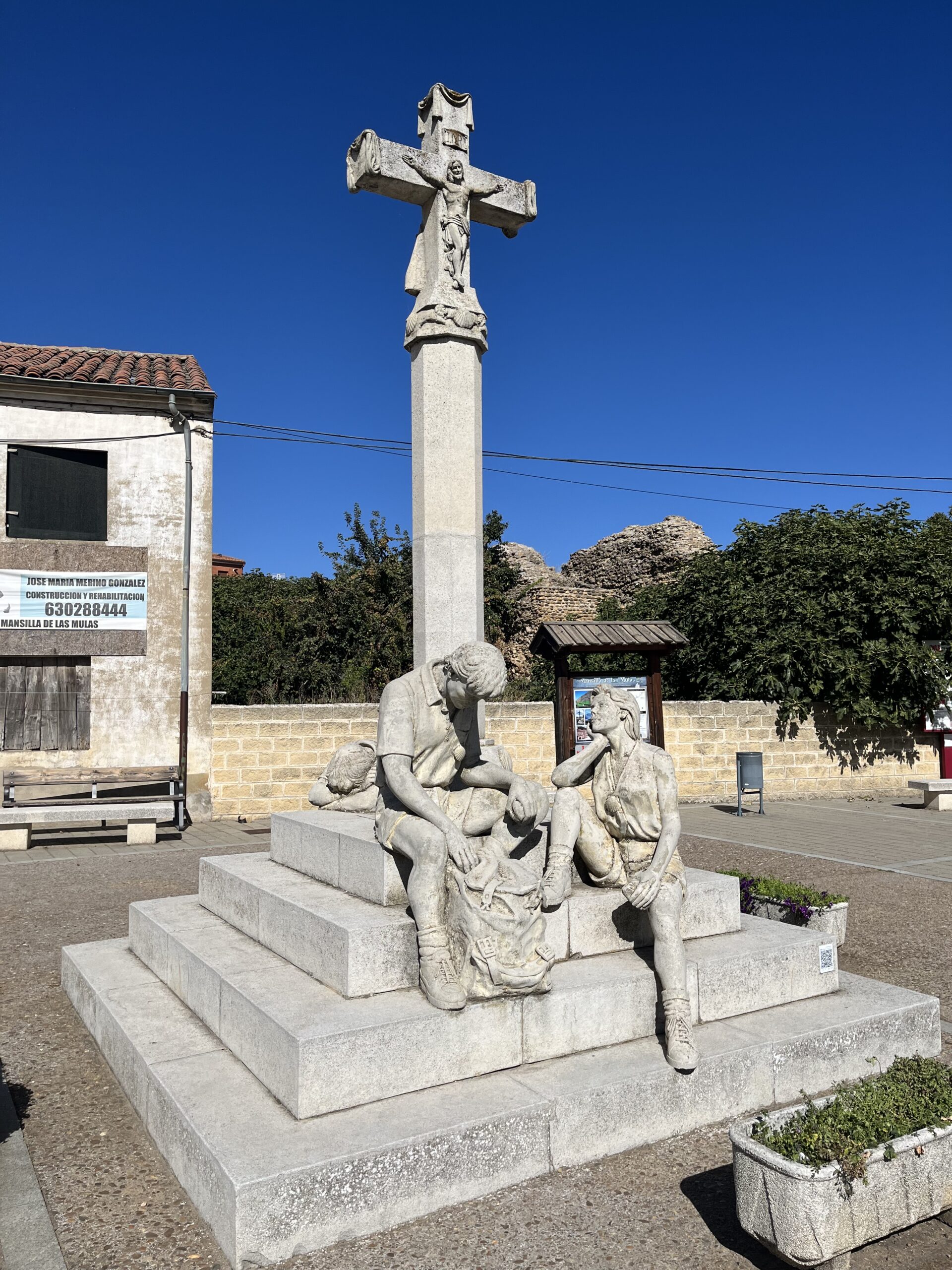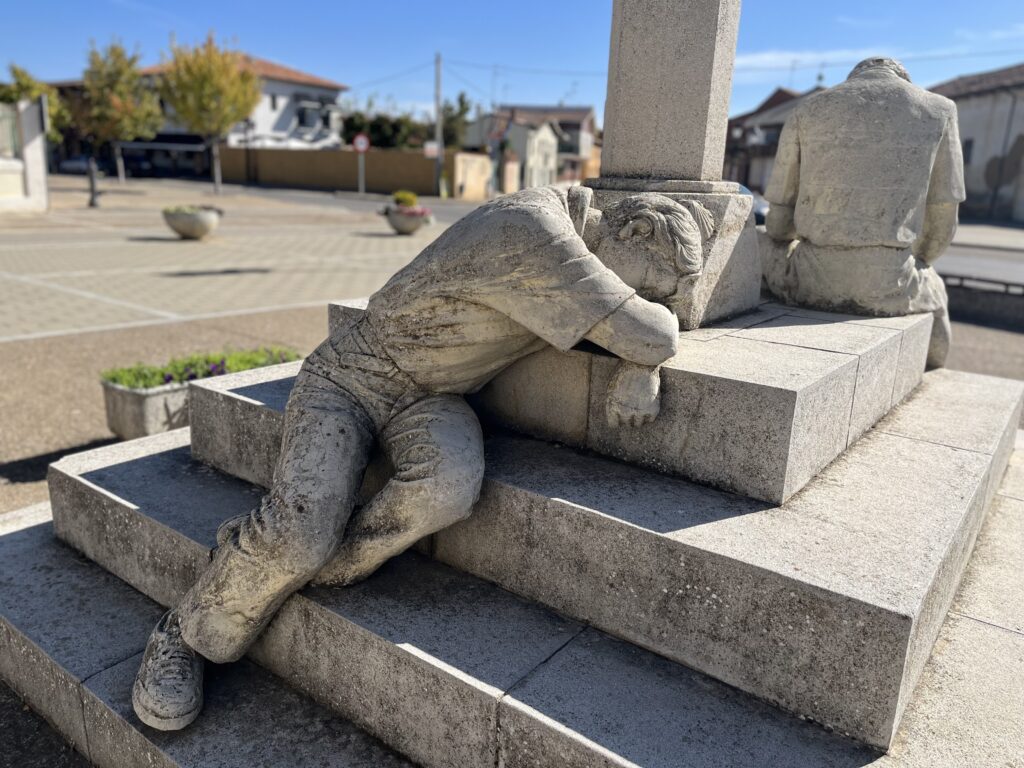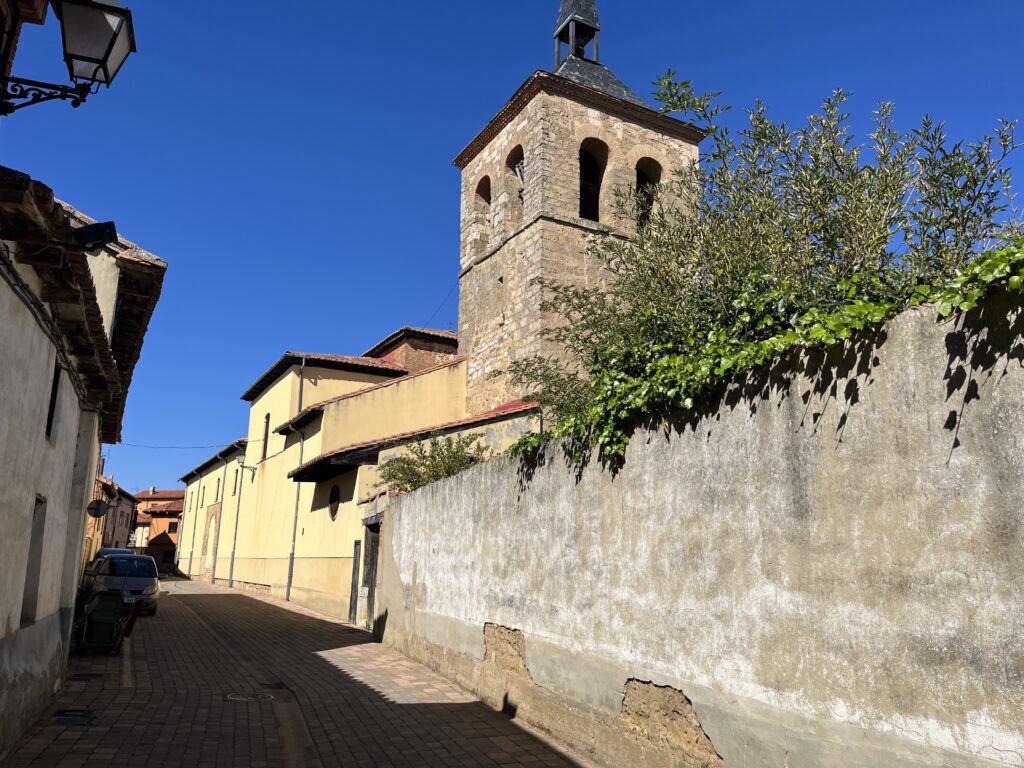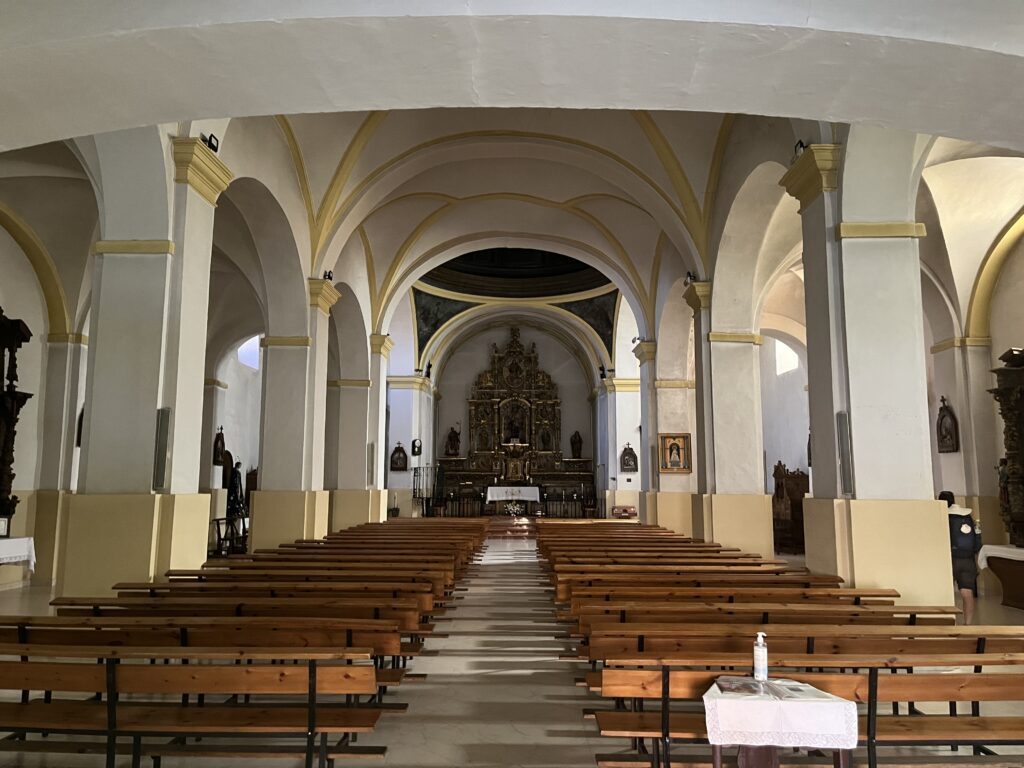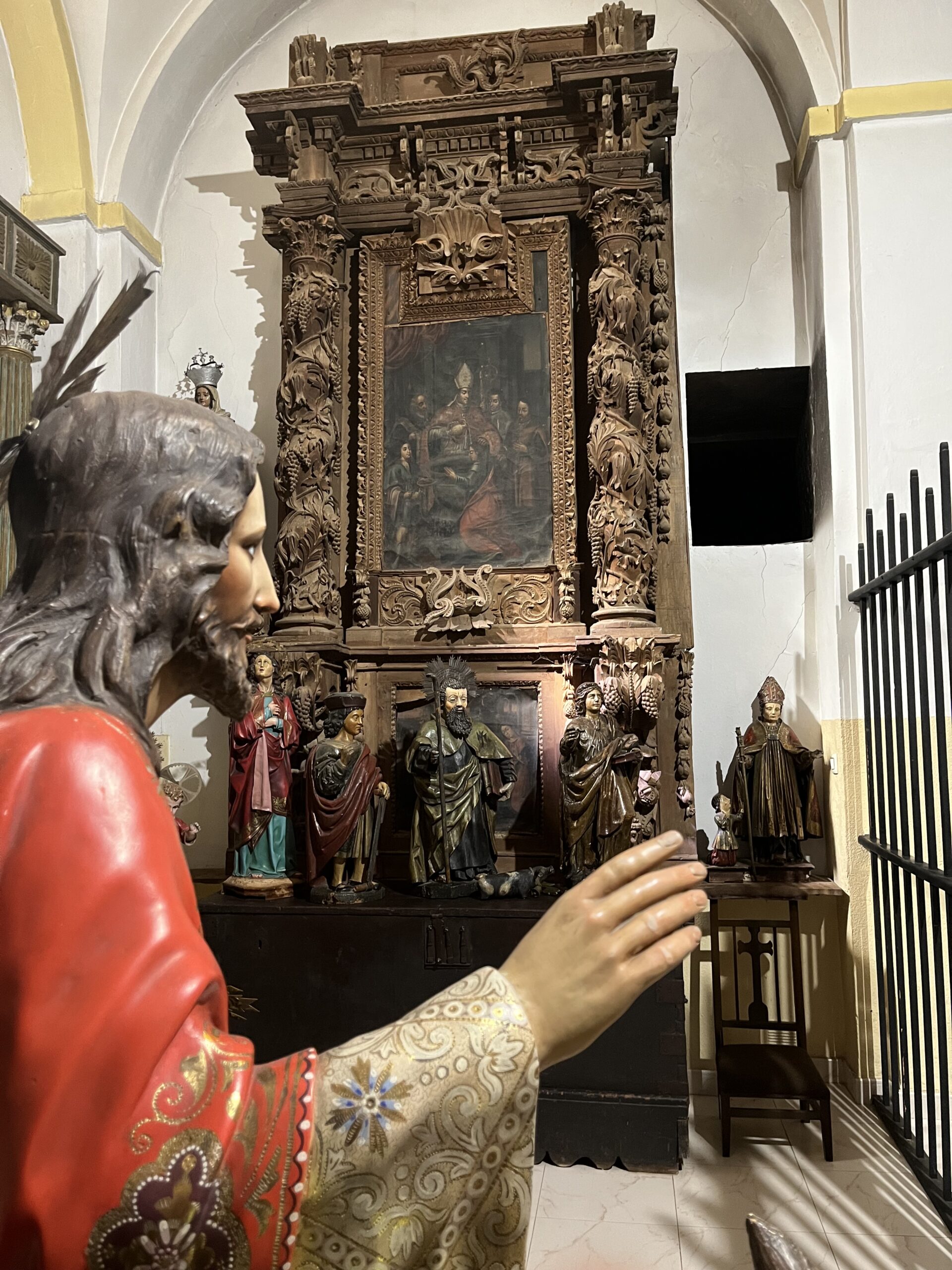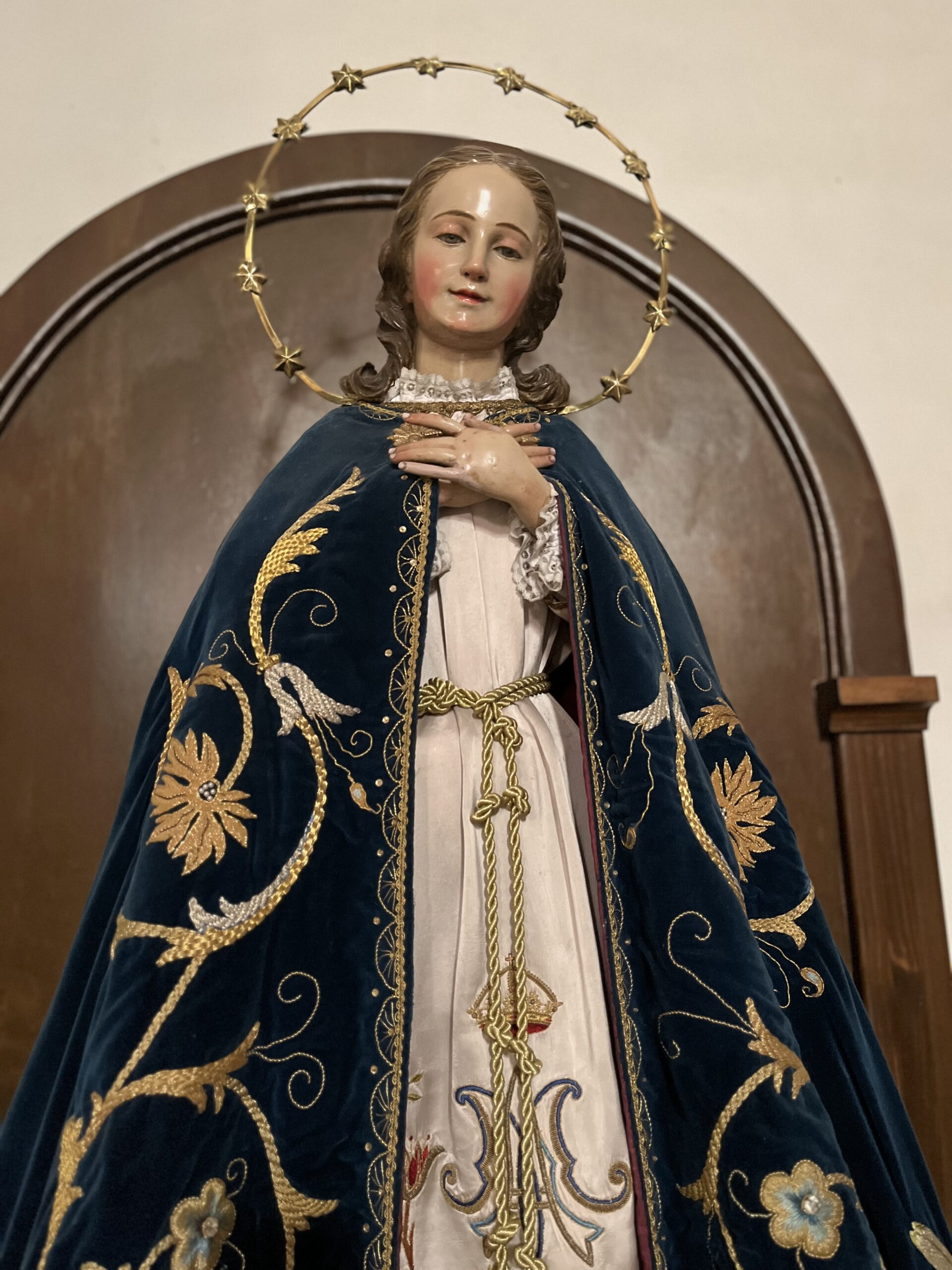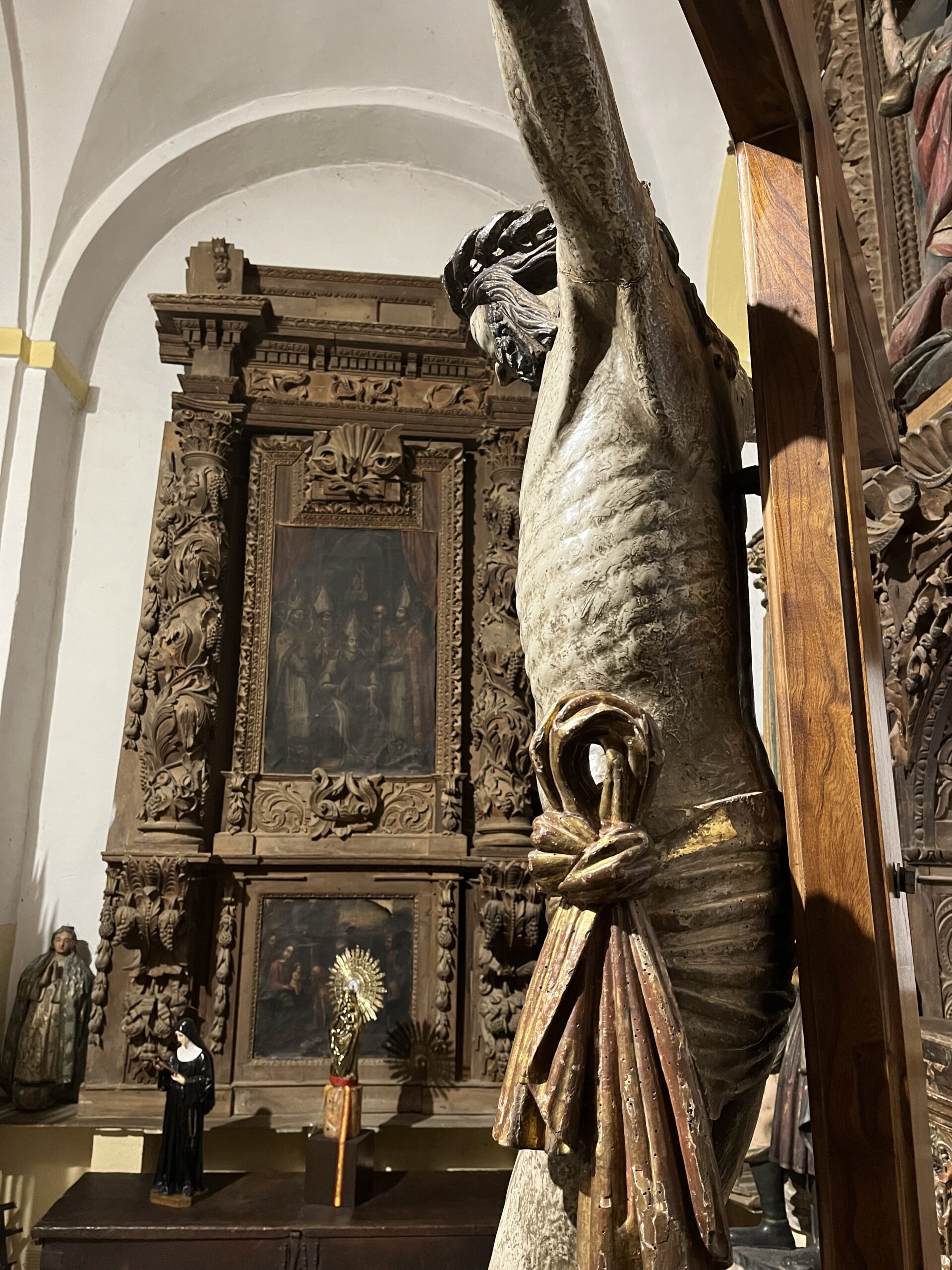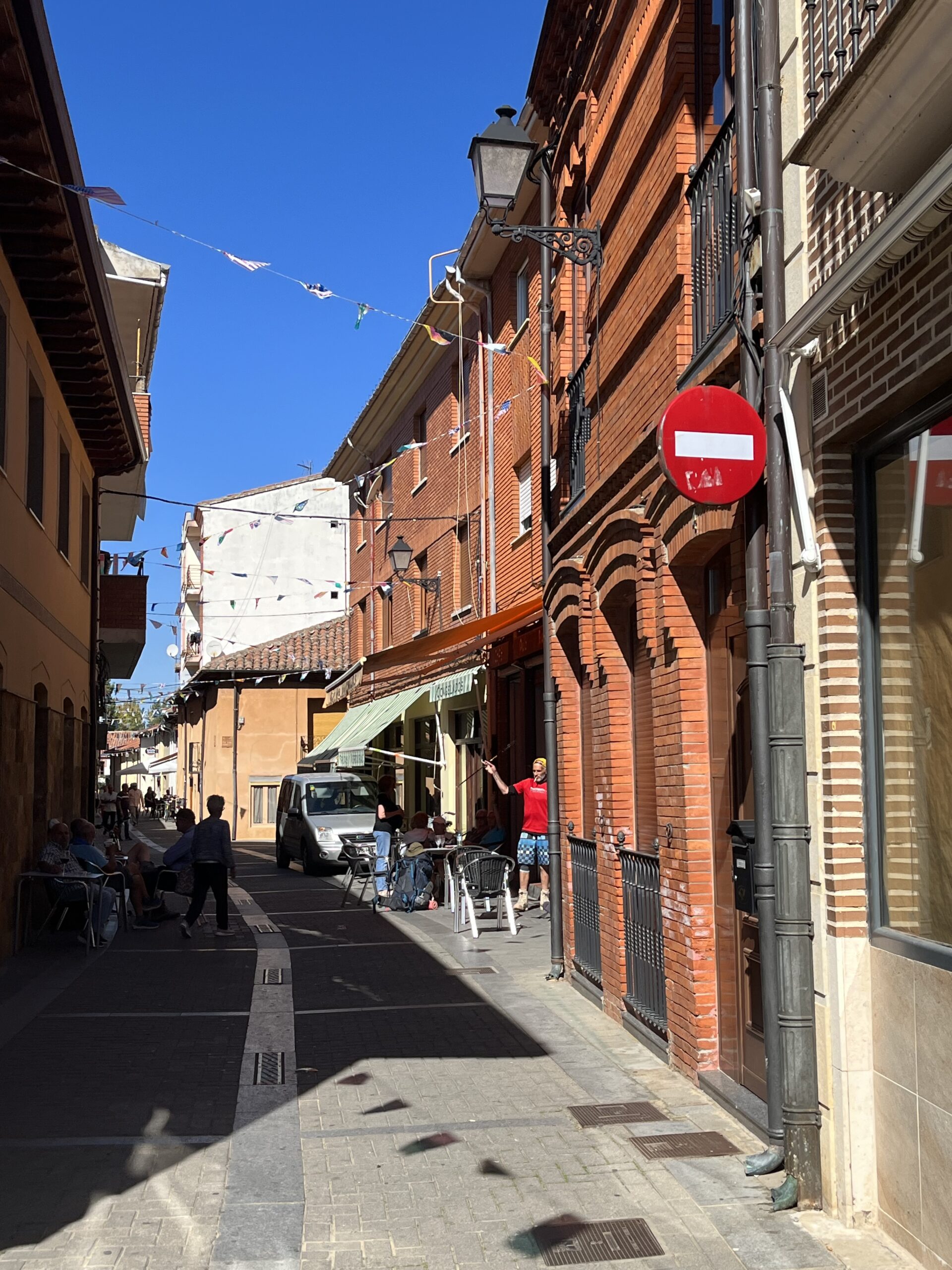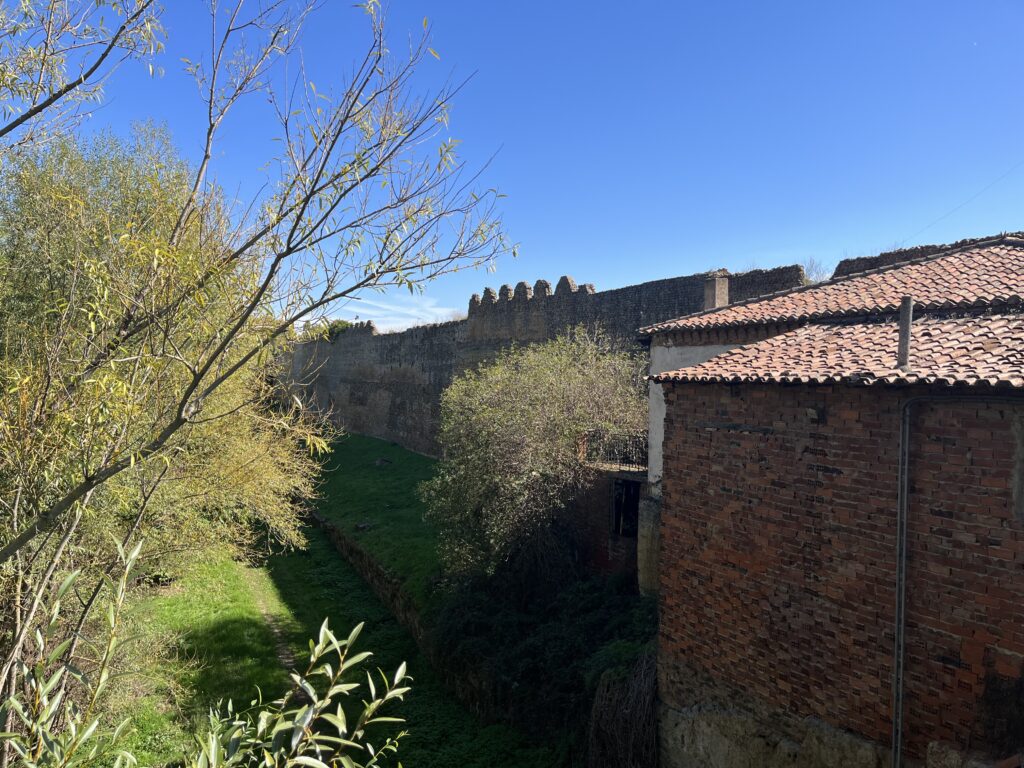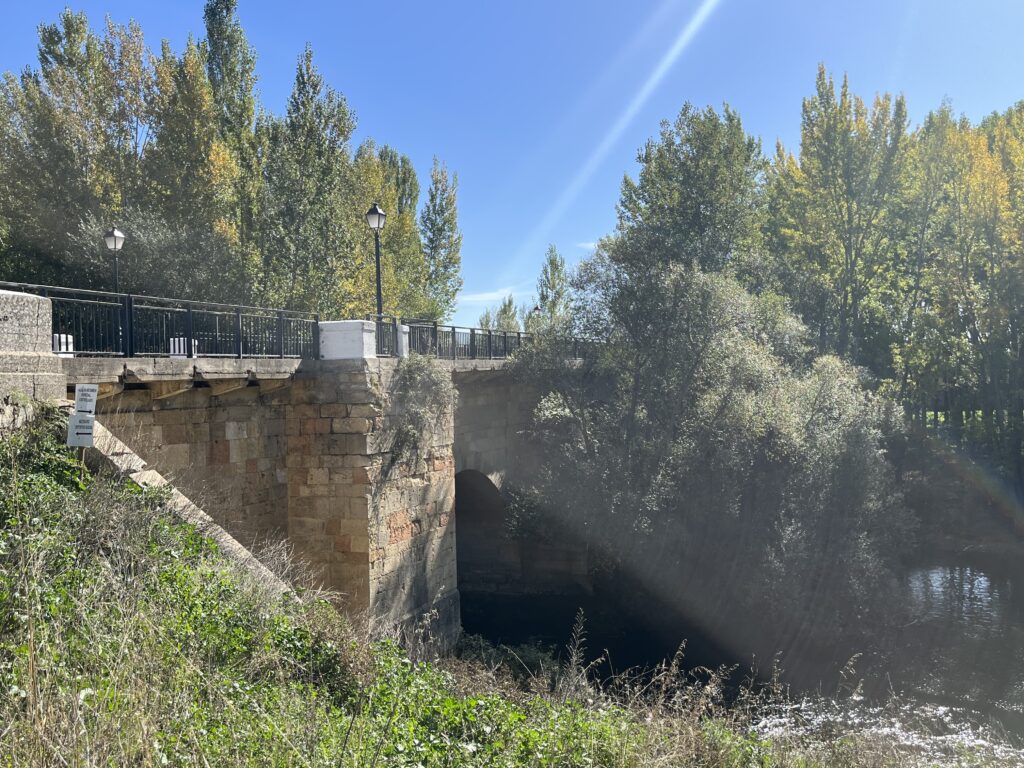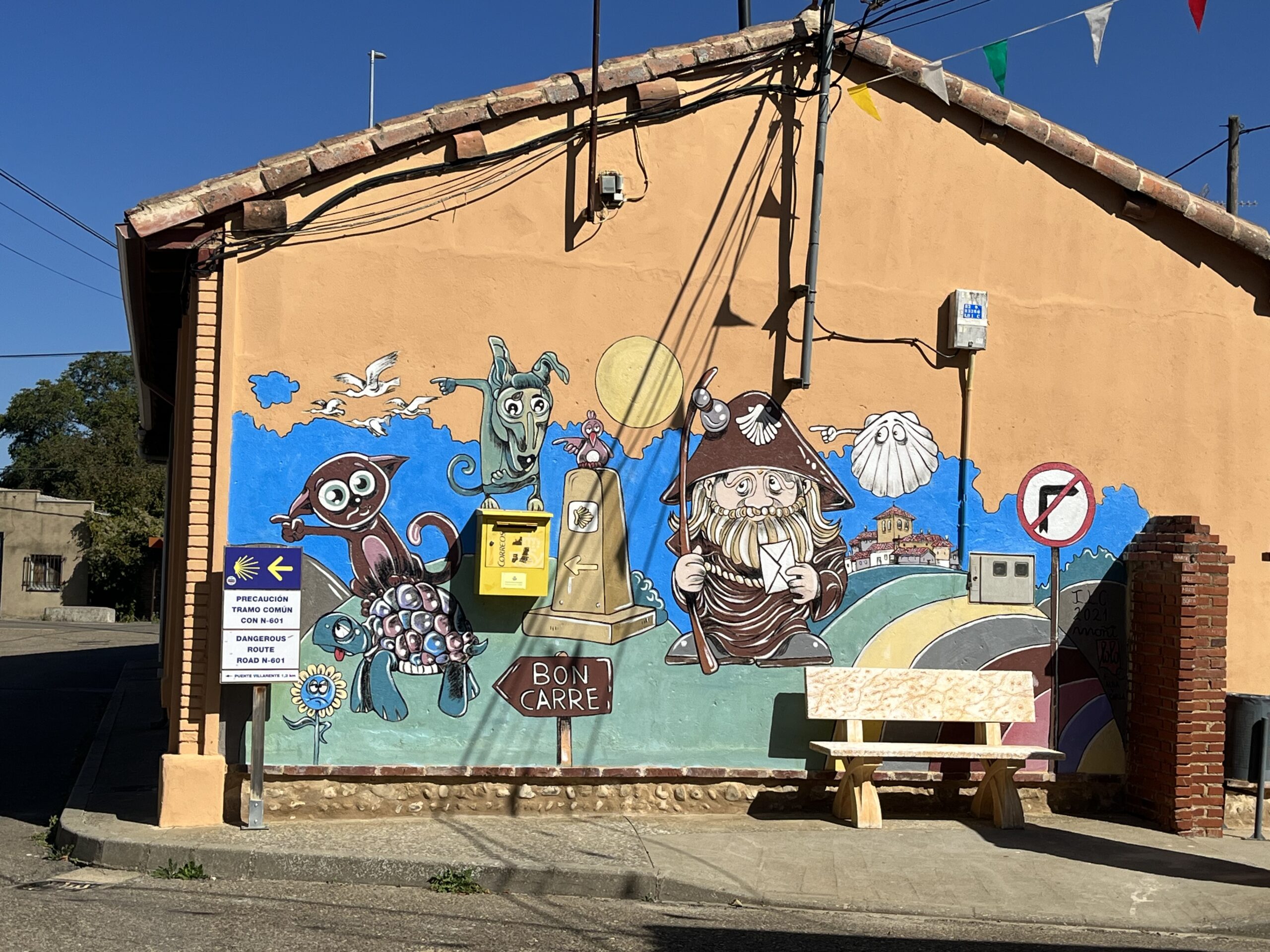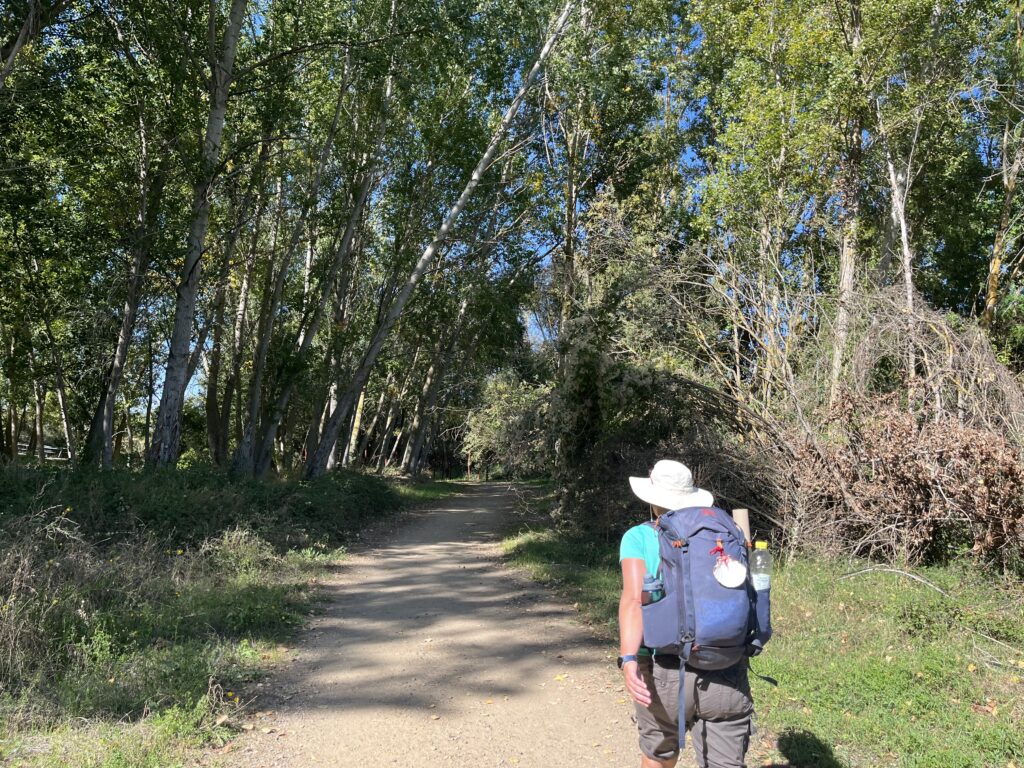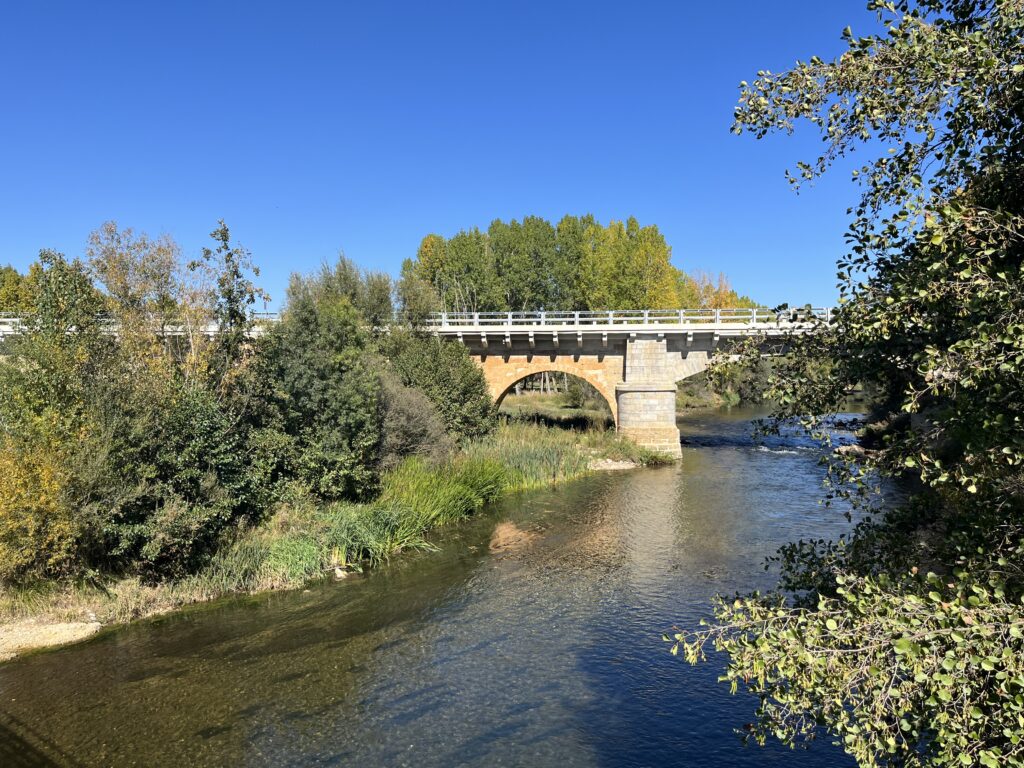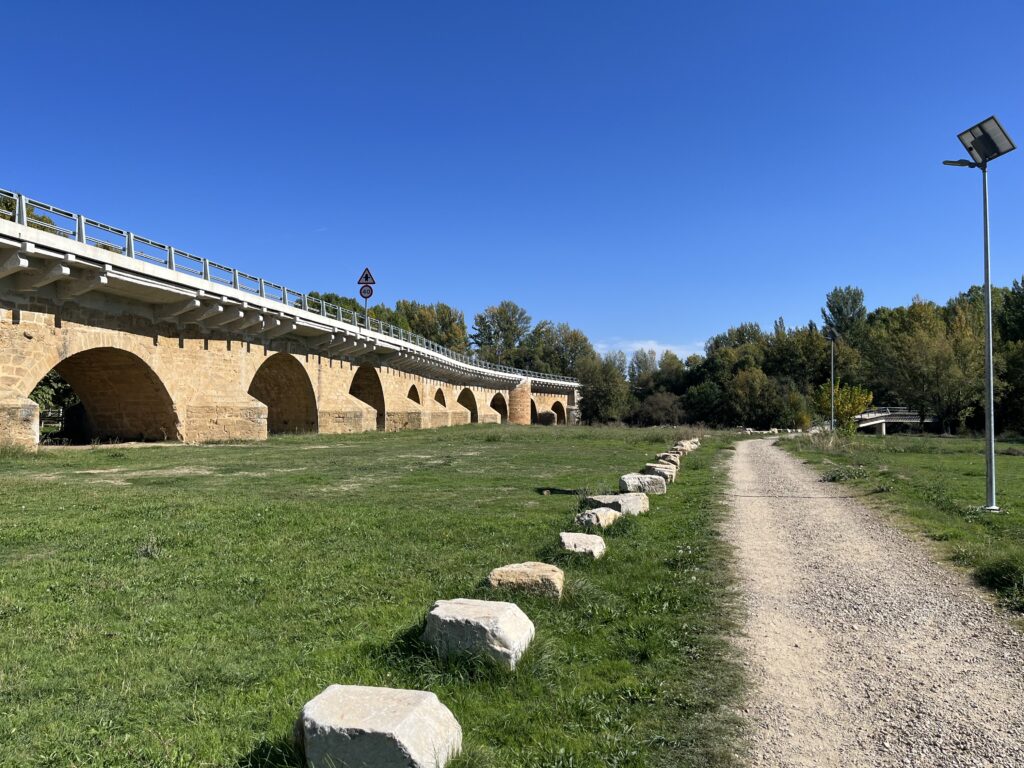Via Podiensis: a Long Meseta Day
Last night after a large communal dinner, which we ate outside in the plaza in front of the albergue, a group of us went up to a nearby hill to watch the incredible sunset.
There’s an arch of stone and brick up on the hill, which is all that’s left of the original village church. The story goes that the locals insisted on digging out bodegas in the hill and eventually undermined the foundations of the church. One day, the whole thing just collapsed.
This morning, we had a quasi-communal breakfast that started at the very pilgrim reasonable hour of 6 AM. Tara and I left together about 7 AM. It was still dark, but this was the Meseta, after all. The terrain was not going to be difficult.
Tara and I walked a long time on a straight gravel path, a continuation of yesterday with a road to our right and the seemingly endless line of well-spaced trees to our left. At some point, the sun rose behind us.
At about 8:15, we walked into El Burgo Ranero and enjoyed second breakfast at the first café we came to. Here I discovered a new taste sensation, which is sort of in the French toast family. I think it’s called torrija, and it’s made with cinnamon and maple syrup.
After town, the road was back to the previous configuration. Now in the light of day you could see mountains to the right and arcing in a long line all the way ahead of us.
The ones to the right are clearly the Cantabrians, but those ahead of us – are these the hills we climb into Galicia? I don’t know.
The morning was still quite chilly, but the sky was mostly cloudless, and I expected it would be hot enough before long.
We were surrounded for much of the morning by the endless agricultural fields ending only in the distant mountains. On a few occasions, we crossed long lines of trees. Mostly these were lining streams or rivers, and occasionally we would have a lowland with a managed forest, trees planted in straight rows.
The fleece finally came off about 9:40 AM. We would occasionally pass by adobe ruins in the fields, half forgotten houses or barns slowly melting back into the topsoil.
At one point, the Camino crossed a concrete canal. I presume this is for irrigation.
Finally, at 10:38 AM, the road curved for the first time today. Other curves soon followed, and even a hill or two. At about 11 AM we began a descent into the town of Reliegos, arriving at the café there about five minutes later.
After half a sandwich, a Coke, and a slice of cake, we departed about 11:45 AM. In 1947, this town was hit by a small meteorite – there’s a little monument there and everything. Coming so soon after the war, it induced an absolute panic, as the local authorities were convinced that someone had dropped a bomb on the town.
After town, it was back to the same white gravel tree-lined path. Tara told me that according to her guidebook, this path with the trees is 37 km long. I’m looking forward to the end of it.
At some point afternoon, we crossed a bridge over a large freeway. From the top, I could see a herd of cows. How long has it been since I’ve seen cows?
We entered the town of Mansilla de las Mulas at 12:45 PM. Now the decision: to push ahead another 6 km, giving us a short day tomorrow into León, or staying here as originally planned.
As it turns out, our decision was made for us. Of the town’s two albergues, one was closed and the other was full. There was no choice but to move another 6 km down the road.
Nearby was a powerful statue of three pilgrims one exhausted, one hopeful, one despondent, which of course are three states that nearly every pilgrim goes through at some point in their pilgrimage, sometimes all in one day.
We passed the old medieval walls, through the Puerta Castillo o de Santiago – the Door of St. James – on our way through the medieval core of the town.
We stopped to visit the church of Santa María, which was originally built in the 12th century but completely rebuilt in the 18th. We didn’t spend a whole lot of time there, unfortunately, given the circumstances, but I did pray for the intentions of the Camino before we moved on.
The bridge out of town give us a great view of the town’s medieval walls. And very quickly after that, it was back to flat white gravel with the road on the right – which in this case was a pretty busy highway – and a row of trees with cornfields beyond on the left.
At about 2:20 in the afternoon, the Camino diverged from the highway, apparently due to construction. We went through the streets of the sleepy farming town of Vilamoros. The church was locked, but the bar was packed. And then it was time for some good old fashioned highway walking.
After passing a rather impressive looking bar named Casablanca, the Camino entered the woods on a gentle path. It then crossed over a wide river before heading up into the village of Puente Villarente at about 2:45.
The village is named for the twenty-arch bridge over the Río Porma. And it certainly is an impressive bridge.
We finally came to an albergue with available beds, and the place is a little paradise with gardens and comfortable rooms. They also serve dinner, which is handy since there’s very little else in this town.
Today’s walk ended up being almost 35 km, which is my longest day in Spain so far. It does mean, though, that the walk into León tomorrow will be extremely short – only 11 km or so – which gives plenty of time to explore this major city.
Date: 09 October 2023
Place: Puente Villarente
Today started: Bercianos del Real Camino
Today’s Photos!
